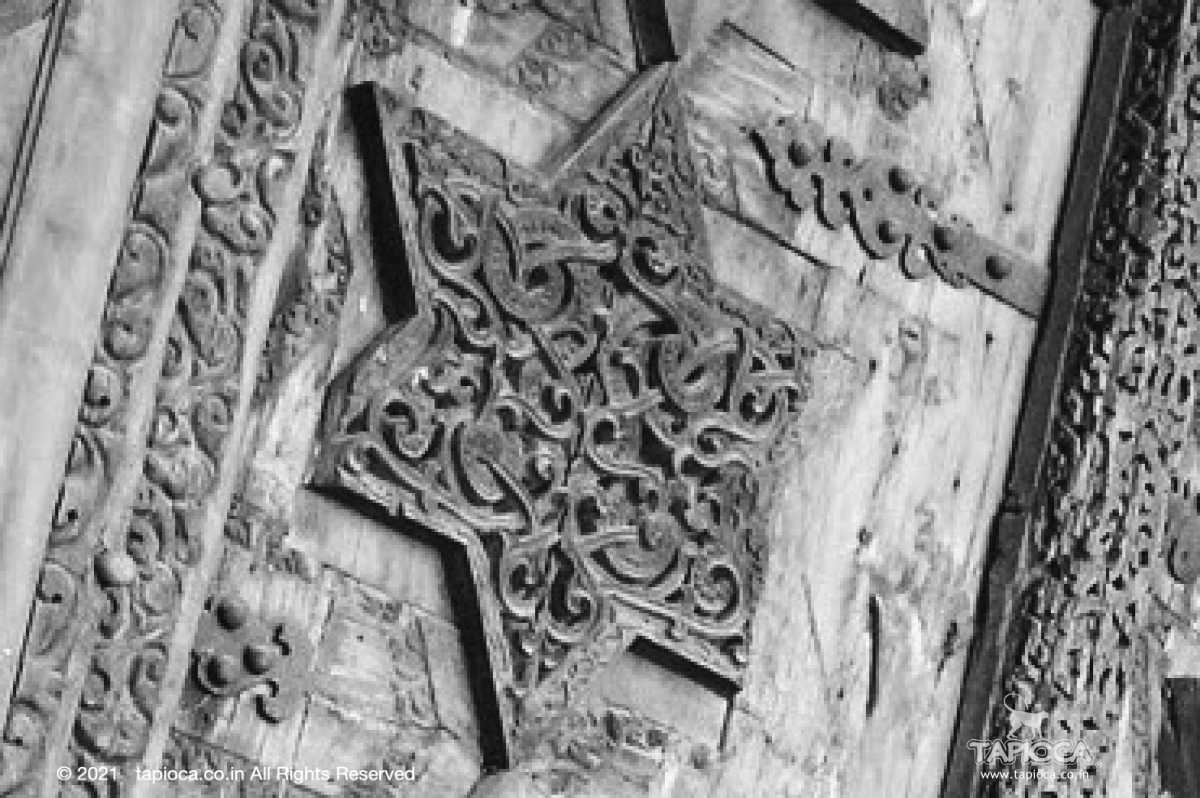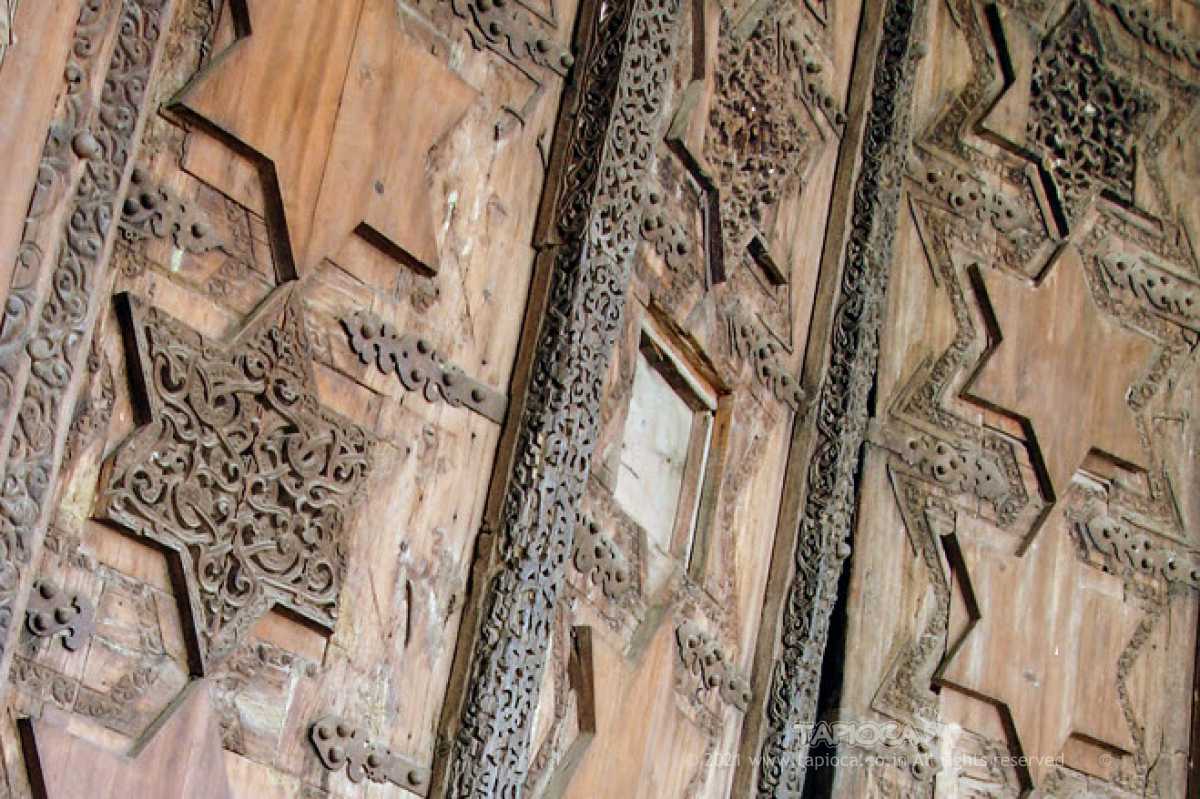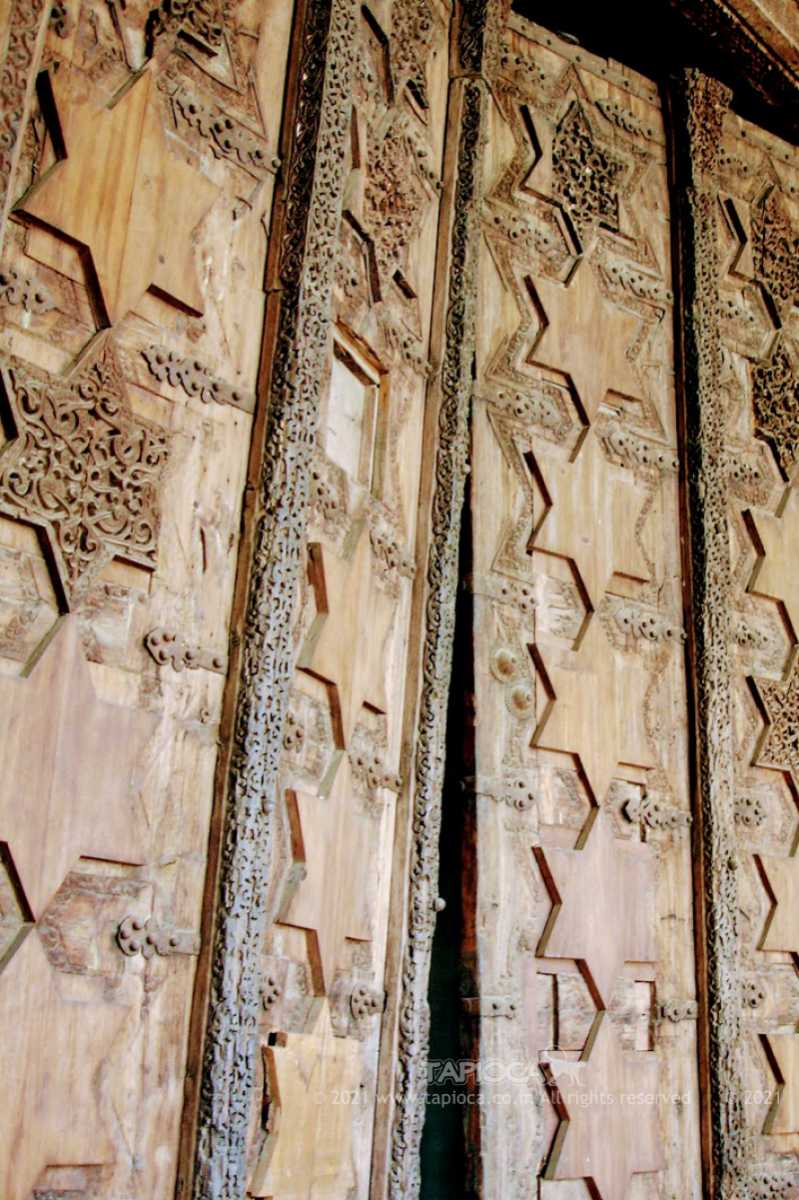"Somnath Gates"
The "Somnath" Gates now stored in a room in Agra Fort has a curious story to tell.

Agra
This Gate as a story to tell!
Y
ou may not notice these doors that easily while touring the Agra Fort, as it is kept locked in side a room. But there is a sign board just outside the room that gives details. Look for this as you are in the Khas Mahal area. The "Somnath Gates" are kept in one of the corner rooms in the south of the Khas Mahal.This door has nothing to do with the Agra Fort. From Afghanistan it was brought and stored here by the British in 1842. Either as a gimmick or as a blunder the then Governor-General, Lord Ellenborough proclaimed that it was the gate of the Hindu temple looted by the Afghans in 1025. The idea of this proclamation was to appease the Hindus. But it turned out to be an embarrassing mistake and the gate was abandoned in Agra Fort.
This gate originally belonged to the tomb of Mahmud of Ghazni. He was one of the most hated invader in India. All his raids were for looting wealth; he neither had any serious political ambitions nor any religious intention in the raids. The targets were specifically large temples of north India like the temples of Nagarkot, Thanesar, Mathura, Kanauj, Kalinjar and Somnath. They were known to posses large wealth in terms of gold, diamonds and money , and attracted the raiders.
Some how the British were trying to tell the Hindus that the gates they brought after an attack on Gazani originally belonged to the Somnath temple in Gujrath, which Mahmud of Ghazni took away 8 centuries back! The Governor General was in a jubilant mood as his army led by General Nott managed to capture Ghazni in Afghanistan after much loss from his side. Even battle honors like 'GHUZNEE 1842' and 'CABOOL 1842' were awarded for this army expedition into Afghanistan.
FROM THE GOVERNOR-GENERAL TO ALL THE PRINCES AND CHIEFS AND PEOPLE OF INDIA.
"My Brothers and my Friends - Our victorious army bears the gates of the temple of Somnauth, in triumph from Afghanistan, and the despoiled tomb of Sultan Mahmood looks upon the ruins of Ghuznee. The insult of 8OO years is at last avenged. The gates of the temple of Somnauth, so long the memorial of your humiliation, are become the proudest record of your national glory, the proof of your superiority in arms over the nations beyond the Indus.
To you, Princes and Chiefs of Sirhind, of Rajwara, of Malwa, and of Guzerat, I shall commit this glorious trophy of successful war. You will, yourselves, with all honour transmit the gates of sandal wood through your respective territories, to the restored temple of Somnauth.
The chiefs of Sirhind shall be informed, at what time our victorious army will first deliver the gates of the temple into their guardianship, at the foot of the bridge of the Sutlej.
My Brothers and my Friends - I have ever relied, with confidence, upon your attachment to the British Government. You see how worthy it proves itself of your love, when regarding your honor as its own, it exerts the power of its arms to restore to you the gates of the temple of Somnauth, so long the memorial of your subjection to the Afghans.
For myself, identified with you in interest and in feeling, I regard with all your own enthusiasm the high achievements of that heroic army, reflecting alike immortal honour upon my native and up on my adopted country.
To preserve and to improve the happy union of our two countries, necessary as it is to the welfare of both, is the constant objects of my thoughts. Upon that union depends the security of every ally, as well as of every subject of the British Government, from the miseries whereby, in former times, India was afflicted; through that alone has our army now waved its triumphant standards over the ruins of Ghuznee, and planted them upon the Bala Hissar of Cabool.
May that good Providence, which has hitherto so manifestly protected me, still extend to me its favour, that I may so use the power now entrusted to my hands, as to advance your prosperity and secure your happiness, by placing this union of our two countries upon foundations which may render it eternal.
(Signed)
Ellenborough
Lord Ellenborough did not stop with that proclamation. He even ordered a procession to carry the door to Somnath in Gujarath , that included escorting of the gate to its final destination by his personal guards.
In normal circumstances , such a wrong archeological conclusion would have been dismissed as an error. This had a political angle to it. Ellenborough's letter did more harm than what he was probably trying to achieve. Little he thought that the "All the princes and chiefs and people of India" to whom the proclamation was addressed to include a great number of Muslims of India.
The Muslim population of India in general and the Princes in particular while they don't wanted to be held answerable for some atrocities happened 8 centuries back , took it as an insult ; for the Hindus it was an a ridiculous hoax as the temple of Somnath itself as lying in ruins at that time.
The repercussion of this could be heard even in England's parliament. His theatrical bombast was compared with that of Napoleon's blunder on Egyptian pyramids and bringing the hornet's nest to his own ears.
An English newspaper wrote, " It is enough to produce his immediate recall, and such language is not at all in accordance with English feelings or practice."
To top it all it was proved that the gate did not belonged to any temple. The gate of Somnath temple was believed to be made of sandalwood. In all probability it would have been destroyed in one of the attacks the temple faced , rather than got it transferred to Afghanistan as a booty.
In short , the journey of the "Sonmnath Doors" ended at Agra and got locked in Agra Fort which was used as a military garrison of the British administration.
Back to the door, again. It is made of giant wooden planks with rows of star shaped designs projecting on it. This door is transported it India complete with its outer frame ( the Jambs) that fixed it to the wall. A close look on the door reveals that the design of the door was never completed. Only a few of the six pointed stars mentioned above are carved fully. For the rest star remains plain without any decoration on it. You can even spot the metal plates used to hold the planks. The door doesn't have the hallmark of a typical temple door. It is made of Deodar ( Devadaru ) wood, a pine like tree commonly found in eastern Afghanistan and western Himalayan region. On stylistic grounds it belong to the Ghazni region. The motifs on the door are of Sarsanic patterns.

Motifs on the 'Somnath Gate'
'Somnath Gate' inside the Agra Fort

Agra Fort
Abandoned then it may be.... now, 150 years later that incident the door carries some historic value in terms of India's colonial past , if not of its Mughal rule.
